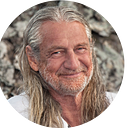What is Kundalini? What is Kundalini Yoga Practice?
How do you practice in a way that is right for you.
Mark Whitwell
Heart of Yoga
The first thing to realize about Yoga is that it is traditional knowledge (sampradaya) and an ancient set of practices (yoga-sadhana) that we have inherited from our ancestors who gave it to us in an unbroken chain of transmission from teacher to student (guru-sishya-parampara). So, the only way to learn Yoga is to find a good teacher who is deeply rooted in a Yoga tradition and is able and willing to teach you the Yoga that is right for you. Anything else but that is probably unreliable and potentially dangerous.
Please consider this…
“The concept of kuṇḍalinī is confused by many imprecise definitions, and even a text such as the Haṭha Yoga Pradīpikā contains contradictory descriptions of it. The definition that follows is derived from what in my opinion is the best, the clearest, and the most coherent text on this subject, the Yoga Yājñavalkya. There kuṇḍalinī is defined unambiguously as an obstacle. What is to enter the suṣumṇā at some stage or other through your yoga practice is, according to this text, not the kuṇḍalinī itself, but simply prāṇa. Many books say that it is the kuṇḍalinī itself that rises up through the suṣumṇā, but this does not make sense if we follow the Yoga Yājñavalkya, one of the oldest texts that deals with this aspect of yoga. One of its central concepts is that prāṇa and the various forms it takes in the body are linked to the practice of yoga, and it says that if we are successful in our practice, the kuṇḍalinī is burned up, making the way clear for prāṇa.“ A snake killed while lying in a curled position unfolds and streches out, the muscles no longer able to keep it coiled. It is said that when the fire in the body, agni, has killed the snake, the kuṇḍalinī unrolls and the passage is open to the flow of prāṇa. This does not happen overnight. Even when parts of the kuṇḍalinī are destroyed, it remains capable of blocking suṣumṇā for a long time.
If you closely consider this image, it becomes clear that kuṇḍalinī is another way of depicting what we call avidyā. In the same way that avidyā can become so powerful that it totally prevents us from seeing puruṣa, kuṇḍalinī blocks the prāṇa and prevents it from rising through the suṣumṇā. The moment the kuṇḍalinī is burned is the same moment that avidyā ceases to exist. Then prāṇa is able to enter the suṣumṇā and slowly move upward. We can also understand haṭha yoga as part of rāja yoga, which is defined as the process in which prāṇa, the friend of puruṣa, gradually rises upward. When it gets to the top, puruṣa unfolds and the king within us emerges. When the emphasis is primarily on the concept “of kuṇḍalinī, then we speak of the practice as kuṇḍalinī yoga.” Desikachar
So Yoga is all about clearing obstructions and developing clarity of mind, linking the mind to the whole body through the unitary movement of body breath and mind in life as it actually is. Reality as it actually is. When the breath and body are linked in unitary movement, the mind automatically follows the breath.And is therefore is linked to the whole body. The whole body is life itself, the intelligence and power of the cosmos. Therefore that intelligence comes into the mind. The mind knows self to be an expression of a source, life itself.
The spherical nurturing patterns of the body that arise from the heart are a duplication of the grand patterning of the cosmic domain. This is obviously so, but universally overlooked.
From Yoga Teacher Domagoj Orlic:
The shortest possible explanation/illustration of the basic principles of Yoga Vinyasa Krama (logical, safe and efficient structuring of a Yoga practice) in a drawing by my Teacher Mark Whitwell:
- In ASANA, simple standing postures could be done first, and then more complex and stronger ones. Then kneeling postures are done as a transition to the ones done lying on the back, which prepare for inversions. The two main inversions — headstand and shoulderstand — are done as the peak of a practice and shoulderstand serves as the first counterpose for the strained neck. Then follow rest and back bends. And finally, side stretching and twisting are done followed by forward bends to counterpose for twists and prepare the breath for pranayama.
2. After some rest (3–5 min.), PRANAYAMA is done. If retentions are done in pranayama, it is structured in such a way as to do them at the peak of let’s say 12 breaths with retentions of 4 seconds done after both inhale and exhale (both 8 seconds long). The first four breaths without retentions prepare for the four middle breaths with retentions and the last four breaths ease out from the retentions. Inhale is always from above the Heart (expansion in the chest), and exhale is always from below the Heart (contraction in the base of the body).
3. DHYANA, or meditation can then be done as a yantric visualization of the downward facing triangle (symbolizing the receptive power of Shakti) and the upward facing triangle (symbolizing the penetrating power of Shiva) constantly intermingling at the Heart as the union of opposites happening in your own Life here and now as You/Cosmos/Divinity that you WholeHeartedly Are!
Mark Whitwell
Heart of Yoga
